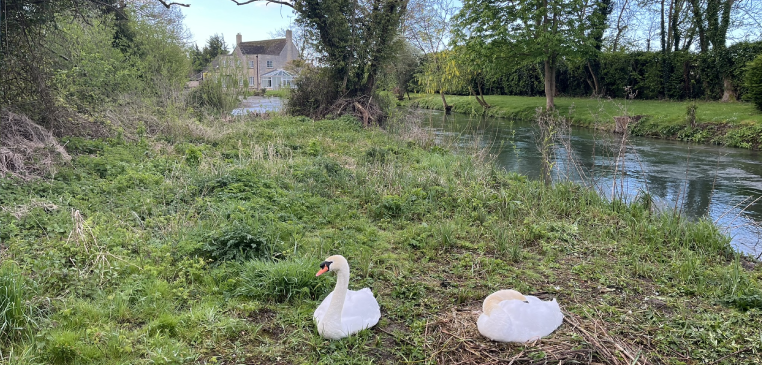1. The Cotswolds Area of Outstanding Natural Beauty
The Cotswolds is one of the most beautiful areas of England, known and loved by people across the world. With its Cotswold stone walls and buildings, open skies, rolling grasslands, beech woods and captivating towns and villages, the Cotswolds is a landscape once experienced, never forgotten.
‘Wold’ is Old English for ‘upland common’ and for centuries the rolling Cotswold Hills have been used for sheep and arable farming. At one time the Cotswolds was populated by half a million sheep and the wool trade with Europe was significant with Flemish weavers brought to England and the merchants becoming wealthier than the King. The Cotswolds’ numerous fine homes and churches, which help to draw millions of visitors to the area each year, were built from the wealth of the wool trade. The Cotswolds is the largest of 38 Areas of Outstanding Natural Beauty in England and Wales and the second largest protected landscape in England after the Lake District National Park.
The Cotswolds was designated an AONB in 1966 in recognition of its rich, diverse and high quality landscape. Covering 790 square miles, the Cotswolds stretches 100 miles from the city of Bath and Wiltshire in the south through Gloucestershire and Oxfordshire to Warwickshire and Worcestershire in the north.
A total of 282 parish or town councils or parish meetings have territory in the Cotswolds AONB.
The central feature of the AONB is the Cotswolds Hills which rise gently from the broad, green meadows of the upper Thames to crest in a dramatic escarpment above the Severn Valley and the Vale of Evesham.
The Cotswolds AONB includes five European Special Areas of Conservation, three National Nature Reserves and over 80 Sites of Special Scientific Interest which testify to its great variety of wildlife and habitats.
The primary purpose of the AONB designation is to conserve and enhance the natural beauty of the area, now and for future generations. The designation gives a formal recognition to an area’s landscape importance and allows for the development of communities and economic activity. However, development is only permitted in ways that enhance the landscape character of the AONB.
Over the past 40 years or so, the pressures on the countryside have increased and in 2000 the Countryside Rights of Way Act (CROW) addressed that challenge. The Act confirmed that AONBs shared with National Parks the highest status of protection in relation to landscape and scenic beauty.
The government also placed new responsibilities on local authorities to ensure further protection for designated landscapes.
The 2000 Act allowed the establishment of Conservation Boards to look after AONBs. This led to the formation of two Conservation Boards – the Cotswolds Conservation Board and the Chilterns Conservation Board, which have been carrying out that duty since December 2004.




